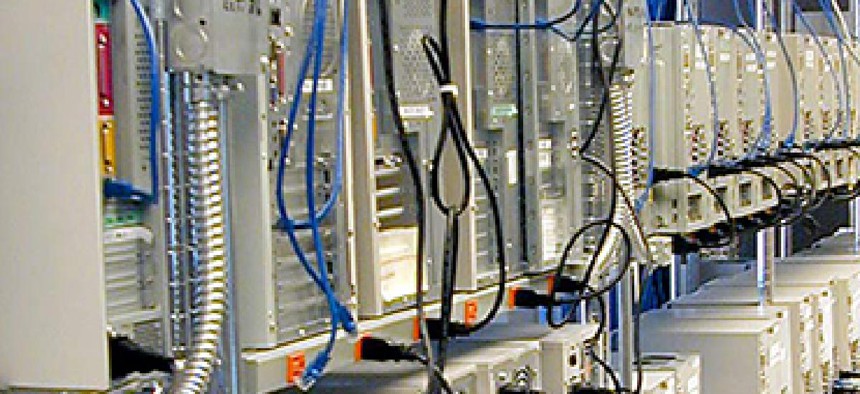Is virtualization the key to real data center savings?

Virtualization may be the key to federal agencies realizing major savings through the Federal Data Center Consolidation Initiative, but it's hard to tell whether agencies are moving forward with it.

Data center virtualization is the key to major savings, says Dan Mintz, former Transportation CIO.
Virtualization may be the key to federal agencies realizing major savings through the Federal Data Center Consolidation Initiative, but progress has been slow, according to former Department of Transportation Chief Information Officer Daniel Mintz.
Mintz estimated as much as 80 percent of conceptual cost savings from data center consolidation could come from virtualizing servers that are currently underutilized when compared to those of private sector corporations. But public sector progress in virtualization has been slow.
“It’s not very sexy, it’s not today’s hot topic, but in a broad sense, virtualization is a very interesting topic,” Mintz, now a principle with ESEM Consulting, told FCW. “The world – everything is being virtualized. There is a huge cost savings from virtualizing servers.”
Yet it is unclear how federal agencies have improved their virtualization efforts in recent years.
In 2011, some agencies excluded virtualization metrics in published plans on how to adhere to the Office of Management and Budget-led FDCCI, and Government Accountability Office officials told FCW that agencies have not published an annual update in 2012 as they were supposed to.
A request for comment to OMB on those reports was not returned by press time.
An FDCCI progress report published in September stated that typical results for average server utilization were 7percent to 15 percent, with a target result of 60 percent to 70 percent. The report stated typical results for average virtualization percentage ranged from nothing to 10 percent, with target results of 30 percent to 40 percent.
Doug Bourgeois, vice president and U.S. public sector chief cloud executive at VMware, said even the target numbers lag behind what companies in the private sector have already achieved.
Many corporations, he said, are “pushing 80 to 85 percent virtualization,” and some are even improving on that.
“We’re seeing large, global organizations that are reaching near the 100-percent level” in virtualization, Bourgeois said. “To get to 30 [percent] to 40 percent should not be that challenging. If agencies haven’t reached the 30-percent level, they’re not trying that hard. Government agencies, while they are pursuing virtualization and embracing it, they could definitely do more.”
One thing that is certain, Bourgeois said, is that “virtualization is a key enabler of data center consolidation.”
Like its virtualization efforts, cost savings for the federal government’s data center consolidation initiative are difficult to determine.
David Powner, director of IT management issues at GAO, told FCW in a recent interview that thus far, individual agencies have not reported specific cost savings resulting from consolidation efforts.
OMB estimates ranging from $3 billion to $5 billion and the Government Accountability Office recently predicting $2.4 billion in savings.
Mark Forman, former administrator for e-government and IT at OMB, said that those numbers are "smoke and mirrors" unless federal agencies also "consolidate away the complexity" of client/server applications.”
Overall, agencies have thus far closed 382 agencies under FDCCI and aim to close or consolidate roughly 1,200 of the nearly 2,900 identified data centers by 2015.
NEXT STORY: iPhone coming to T-Mobile next year






